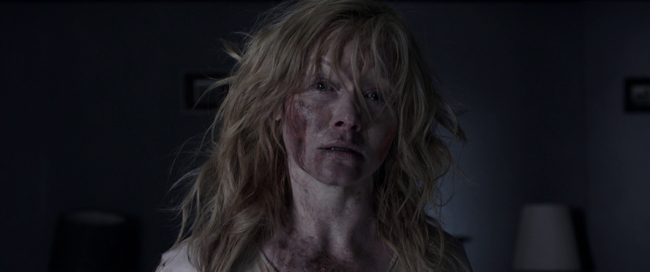 The Babadook
The Babadook
Written and directed by Jennifer Kent
Australia, 2014
The Babadook contains DNA from such disparate influences as Roman Polanski, Joe Dante, Georges Méliès, German expressionism, and Roald Dahl, but Australian writer-director Jennifer Kent’s very impressive feature debut is an intensely emotional horror film that feels completely unique in the current film landscape. It’s an allegory on grief, love, loss, and maternal trauma, and is as consistently unnerving as many a Polanski movie (and is the scariest thing with Roald Dahl blood since Tim Burton’s Charlie and the Chocolate Factory).
Plagued by memories of a car crash that killed her husband six years prior, former writer and single mother Amelia struggles with an unrewarding new job and the disruptive, often insufferable behaviour of her six-year-old son, Samuel. (Husband Oskar was killed while driving Amelia to the hospital to give birth to Samuel.) One night, for the boy’s bedtime story, Amelia comes across a hitherto unfamiliar pop-up book on the shelf, entitled The Babadook. It describes a nightmarish supernatural entity that will work its way into their home to kill them; naturally, it only makes Samuel act up even more. And then mysterious occurrences start a-happenin’, and Amelia starts to join her bratty son in thinking Mr. Babadook may actually exist, and may actually be a threat to them for real.
As the anguished Amelia, Essie Davis gives an astonishing, nuanced performance that’s likely the best horror lead turn since Virginia Madsen in Candyman. Noah Wiseman, meanwhile, gives one of the great child performances of recent memory, completely free of preciousness in his playing a recognisable problem child who offers enough exhausting terror of his own before Mr. Babadook’s book even makes an appearance. You understand why Amelia (and seemingly everyone else outside of an elderly neighbour) would want little to do with the kid, which only aids the film’s ambiguous elements; the idea that Amelia might actually be behind all of this herself, harming her child, is an unsettling concept in its own right before a Papa Lazarou-esque spectre is added into the mix.
Speaking of ambiguity and the spectre itself, Kent relies heavily on suggestion rather than explicit shock tactics (though what there is of that works splendidly), but the metaphorical elements to the creature do make their meaning fairly clear early on and the screenplay doesn’t do much to really deviate suspicion at any point for those who have worked it out. That said, keeping to a consistent register is hardly a problem when the filmmaking is as strong as it is here, with the low-key but visceral cinematography (via Polish DP Radek Ladczuk) and the aforementioned turns from the stars all helping the primal punch of this most striking psychological horror. Credit must also be given to those who designed The Babadook, a creature only fleetingly glimpsed but a perfect embodiment of the boogeyman archetype; like Freddy Krueger cosplaying as Conrad Veidt’s Cesare from The Cabinet of Dr. Caligari.
“You can’t get rid of The Babadook,” says the story in the book. Let’s hope Jennifer Kent will also stick around.
— Josh Slater-Williams






